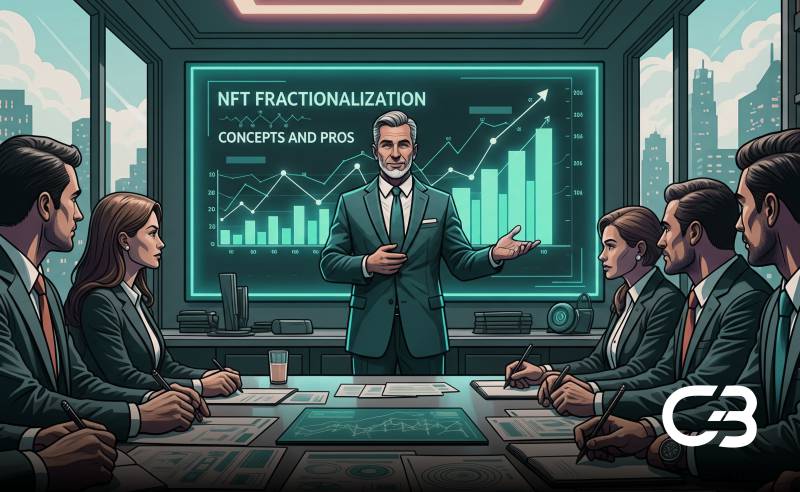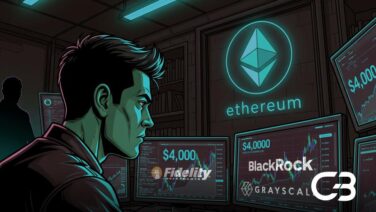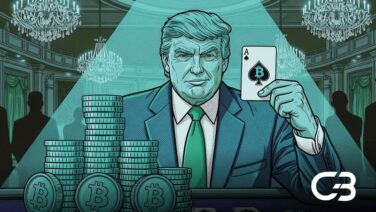Fractionalization has proved to be a new method of making high value digital assets more accessible by dividing them into small tradable units referred to as NFT. The approach enables people to acquire a piece of the costly NFTs as there is a possibility of people not being able to afford a complete asset.
What is NFT Fractionalization?
NFT fractionalization is the process of dividing an NFT into more affordable and smaller units, those units used as shares. Every fraction is a part of the initial NFT and may be exchanged on numerous platforms. Fractionalization democratizes access to NFT assets by allowing many people to share ownership as a way to lower the entry price of high-value assets.
Core Concepts of NFT Fractionalization
Fractionalization of NFTs is focused on fractioning an NFT into tokenized fungible pieces. The initial NFT is swapped into a smart-contract, which at that point creates fungible tokens to signify ownership of the NFT. The fact that these tokens could be exchanged as ERC-20 tokens meant that it was easy to transfer the divisions among consumers. This procedure enables many people to share ownership of valuable NFTs and gives more people access to digital property.
Fractionalization enables many people to possess NFTs that are otherwise costly, such as digital art. The process fulfills the democratization of the costly access to value assets and democratizes the previously closed assets by opening the market to a wider range of investors.
The Process of Fractionalizing an NFT
The process starts with locking NFT in the smart contract, which creates a predetermined amount of fungible tokens. Every token depicts a percentage of the value of the NFT. These tokens are more flexible since they can be purchased, sold, or exchanged as any cryptocurrency. The number of fractions produced is defined by the NFT owner, and each share is priced according to the total value of an NFT. This allows increasing the liquidity and offering NFTs to more potential buyers.
Benefits (Pros) of NFT Fractionalization
NFT fractionalization offers several significant advantages, including the following:
1. Increased Accessibility
Dividing an NFT fractionalized will make it cheaper and accessible to many investors. Smaller shares enable individuals to purchase valuable digital assets at very low costs and enter the market which other people may not find it easy to enter.
2. Enhanced Liquidity
Fractional ownership can increase liquidity as they can be easily purchased as well as sold as a small and affordable piece. This makes the market more active and makes NFTs more liquid which offers buyers and sellers more chances to trade.
3. Revenue Generation for Creators
Whenever their fractionalized NFT is purchased or sold, curatorial fees go to creators and artists. It is a recurring revenue stream to creators not only on the sale but even after sales in the secondary market making it a sustainable economic model to an artist or creators
Security and Regulatory Considerations
Although fractionalization of NFT has numerous advantages, there are still important security and regulatory issues associated with such tools. The challenges include:
1. Smart Contract Vulnerabilities
Using smart contracts, fractional NFTs can rely on the locking of the original asset and producing the fractions. A faulty smart contract can be used by the bad guys and cause your loss of money or its theft.
2. Legal Classification as Securities
NFTs that are fractionalized can be treated as a security based on jurisdiction. In this case, they would come under the complicated financial regulation, introducing a layer of legal complexity to platforms and creators and imposing a need to move in line with the investor protection legislation.
3. Fraud and Misrepresentation
The danger of the unscrupulous tokens being minted is there, which may dupe purchasers into buying bogus junctions. This may lead to huge losses particularly to those investors who are not well versed with the market dynamics of fractionalized NFTs.
The Future of NFT Fractionalization
Fractionalization can create a prosperous future in NFTs as a form of digital asset. It may change the ownership structure and the trading of the digital assets by making the barrier to entry lower and more liquid. But with the expansion in the market, there should be security and regulatory concerns. Eventually, fragmented NFTs can be applied to tangible objects and offer fresh possibilities in terms of how investors could share property over prized objects.
Conclusion
NFT fractionalization is an exciting road to enhancing accessibility of high-value digital assets. It also has a range of benefits including greater accessibility, liquidity, and creator possibilities in earning continued revenue. The possibilities of fractionalized NFTs, despite security and regulatory complications, are evident to change the digital asset market. Fractionalization could soon be a core component of the NFT ecosystem that helps to encourage a greater range of participation and innovation within NFTs.









